#5 – Janvier / January 2023
Jan Baetens
Art between concepts and
synthetic cognition
Dialogue with Ilan Manouach
Jan Baetens : You started your work as a comics artist. What did you find attractive or challenging in this field as well as this medium? And why do you continue to stick to it, at a moment when the field is in turmoil and your own work seems to go into a quite different direction?
Ilan Manouach: I still define part of my professional activity as ‘comics artist’ and I would vouch for a strategic use of comics as a productive springboard. Comics, because, and not despite, of their marginal position in the cultural spectrum, allow for specific affordances and operational modalities that are barely possible in other media or other arts. The weakness of comics institutional anchoring and the lack of affiliations with cultural establishments that produce the necessary social fabrics regulating financial activity in the arts, do not necessarily constitute a drawback for comics artists; nor is the medium’s general ambivalent positioning in relation to official art history and its canonical criteria of cultural legitimacy. These conditions make of comics a moving target, and induce forms of social relationships, research methods and a certain epistemic standpoint towards a plurality in the production and organization of knowledge, that is industry-specific. The use of the term ‘industry’ is important in that regard, and my hypothesis is simple. Comics is more productively described as an industry than as an artform. This turn is becoming all the more necessary when everything nowadays can be commercialized as an art. Since its early beginnings, comics has expanded symbiotically alongside the development of printing, distribution, and communication technologies. The production of mainstream comics was conventionally driven by the standardization of best practices for the transformation of craft into mass production. Both formally, conceptually and from a technical and economic point of view, comics have foregrounded important notions of efficiency, marginal utility and computability. The industrial scale of these operations, from the early stages of ideation down to the last-minute editorial revisions, relies on the carefully orchestrated work of different professionals whose formal subjectivities and conflicting personal interests and ambitions are manifested throughout the chain of signification-production. These are qualities that set the comics industry apart from other forms of artistic expression.
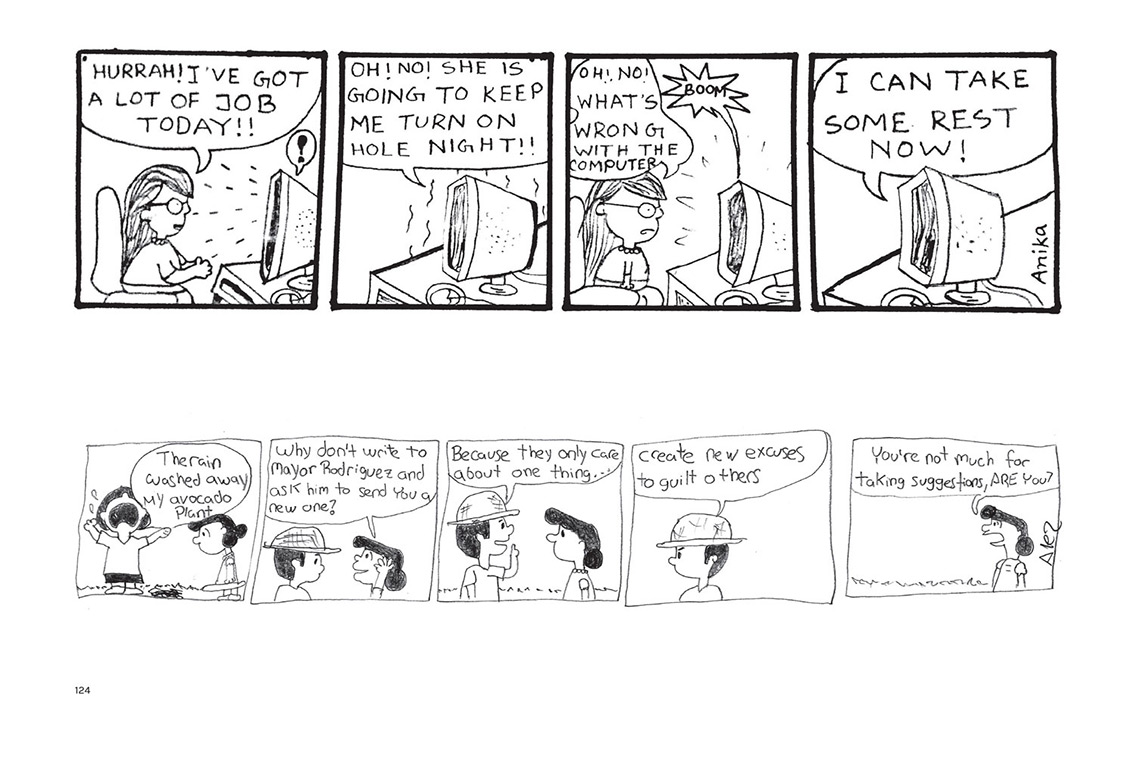
I content that my engagement with the medium’s automation from my early publications in uncreative writing (Katz, Tintin Akei Kongo and Noir) to works mobilizing distributed labor (Harvested, The Cubicle Island and Peanuts Minus Schulz) and the latest experiment using algorithms and synthetic media (Neural Yorker, Le VTT comme je l’aime and Fatswalkers) can be understood as an intensification of the medium’s very own operational intensity. The democratization of these technologies from the advent of photoediting allowing increased easiness in editorializing existing content, the profusion of digitized comics artifacts and the multiplication of media archives and shadow libraries but also the possibility to crowd-source content making through online labor markets and decentralized production belts and finally the democratic access to computational resources, increasing convenience of programming language frameworks and machine learning libraries, forces an expansion of comics craftsmanship in the twenty-first century, similarly to how writer and technologist Blaise Agüera y Arcas described art as a “cyborg” activity: a hybrid and messy exercise where the brain, the retina, the muscles, machines and “millions of lines of code”, proprietary and not, are seamlessly interoperative in the manipulation and encoding of information. It’s arguably the best moment to stick to comics. As a technical object it allows the widest latitude.
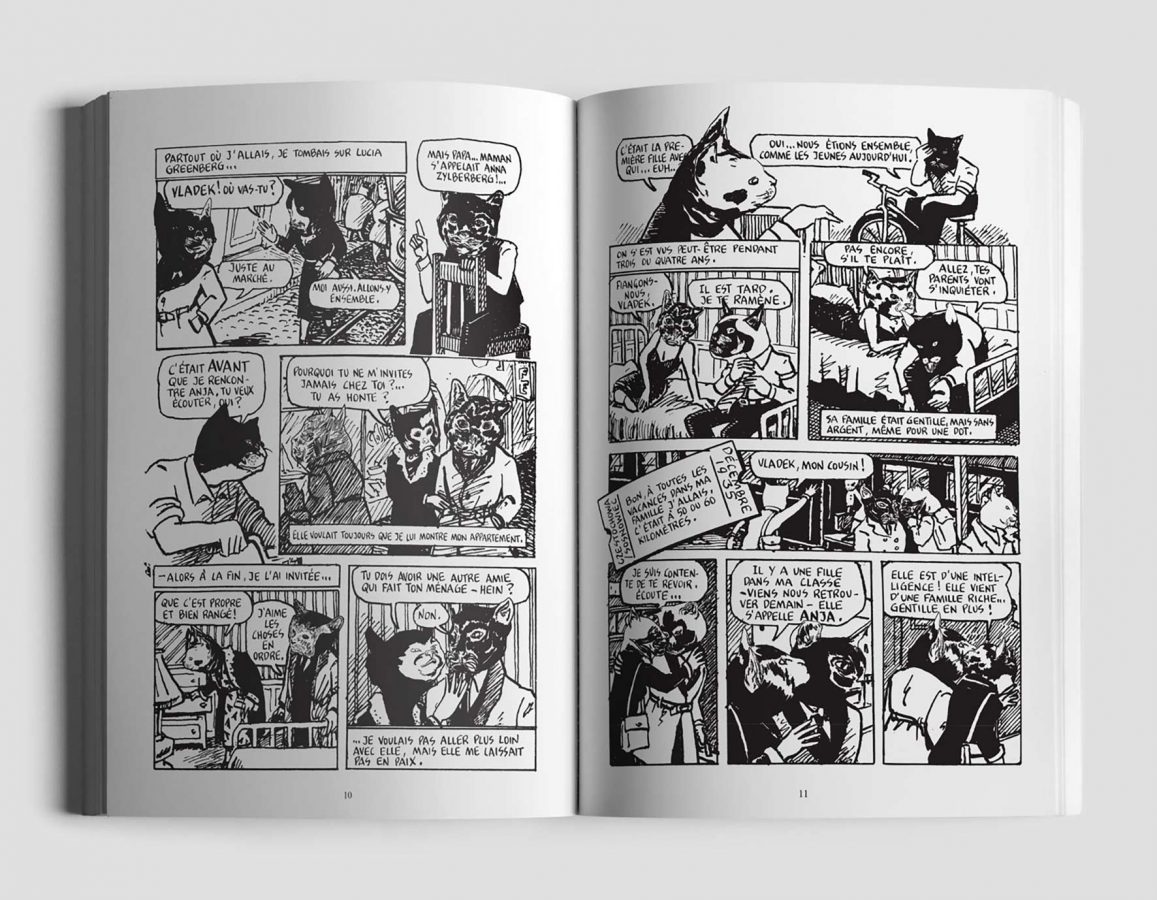
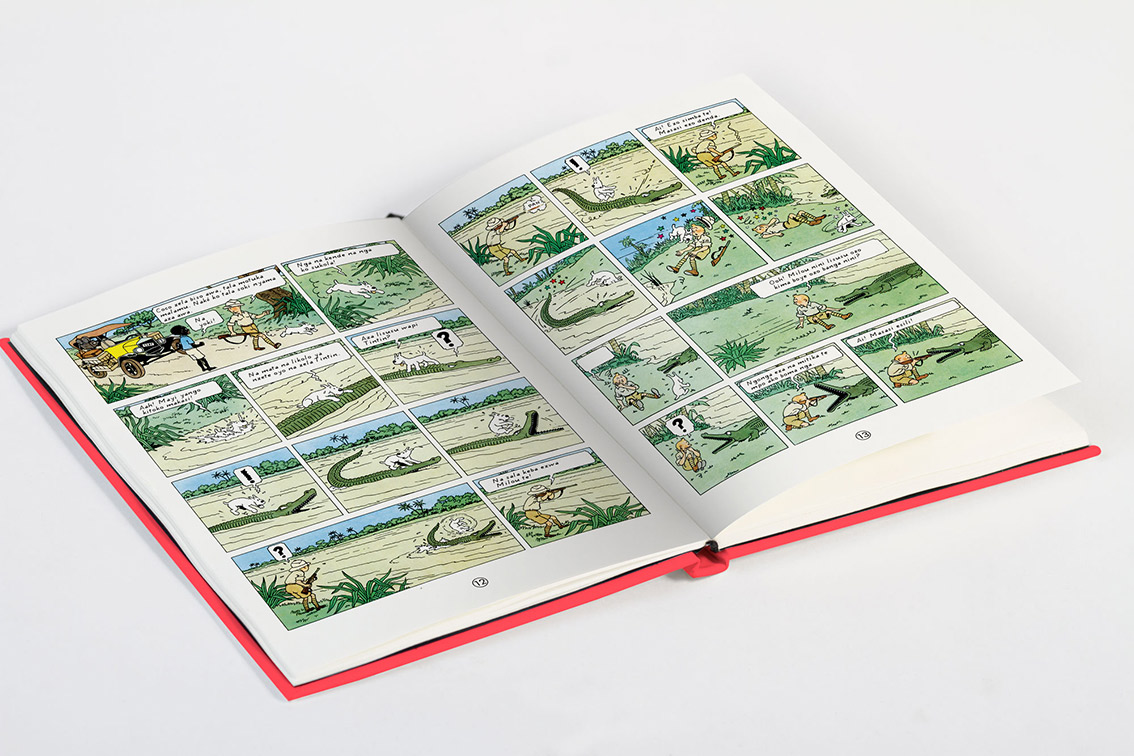
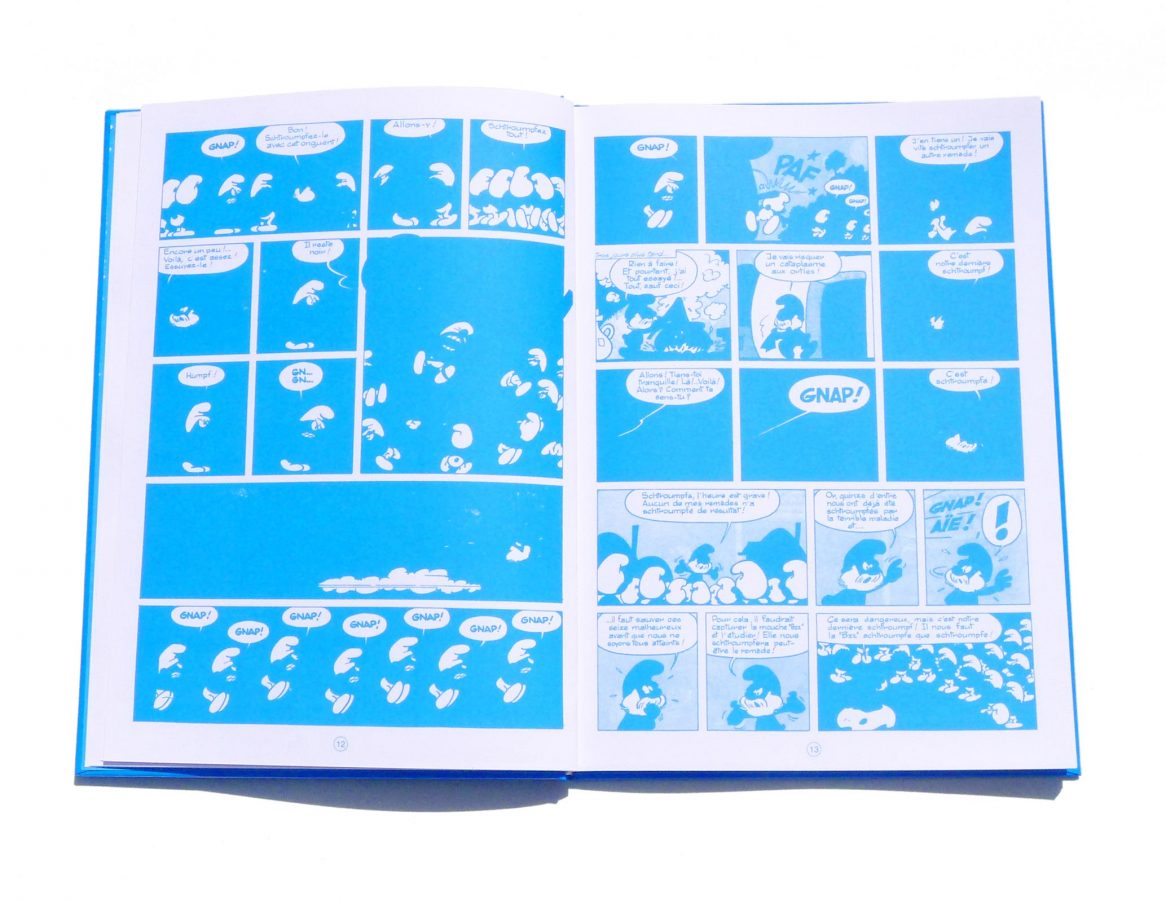
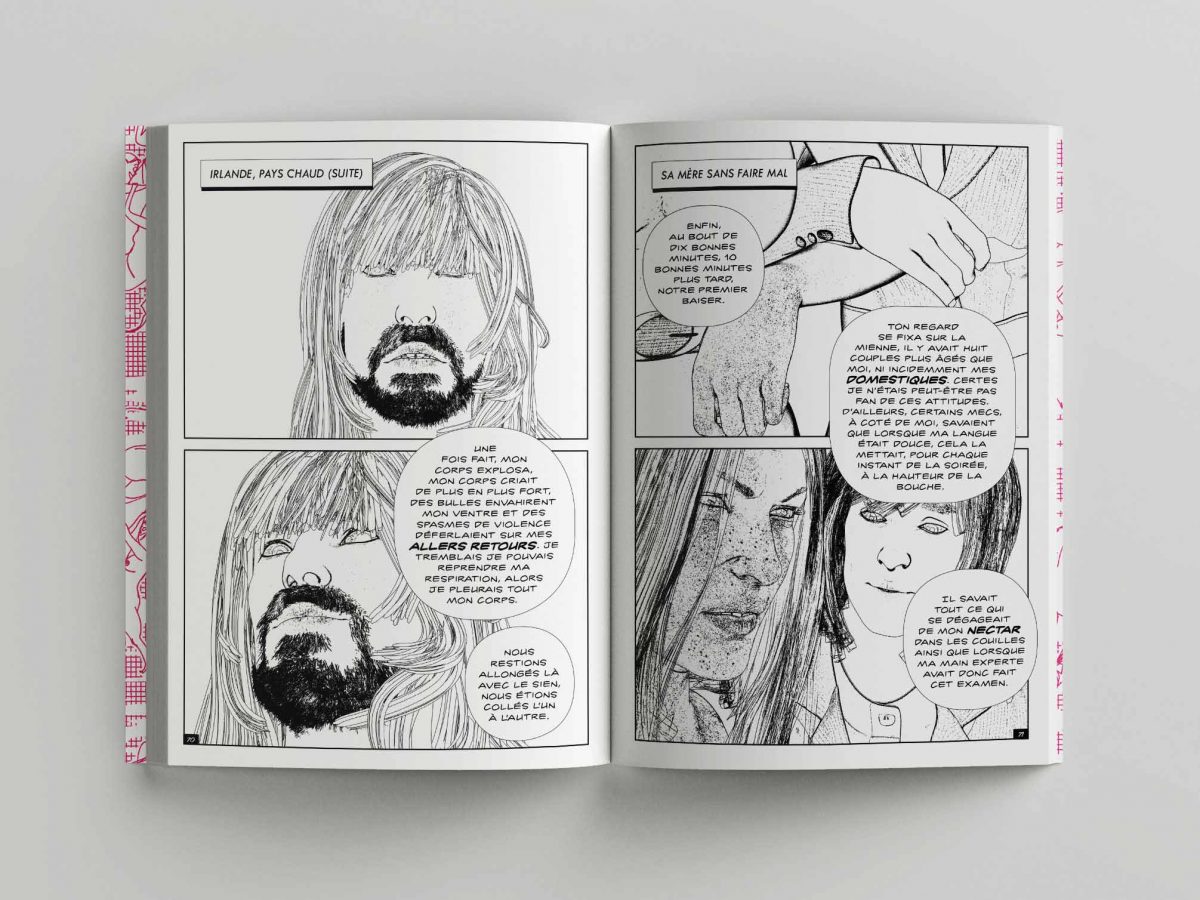
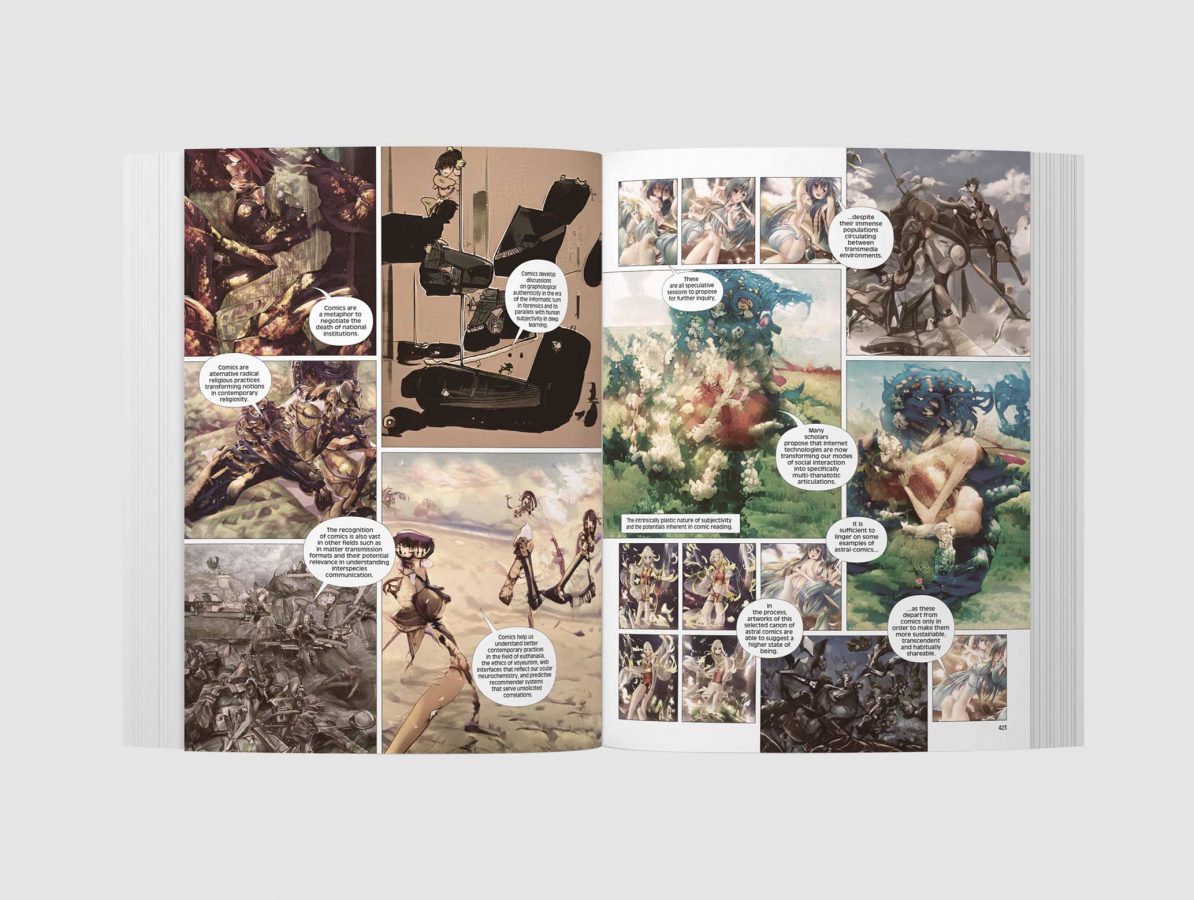
JB: I would like to ask a similar question on your relationship with print in general and books in particular. Didn’t your interest in digital culture and artificial intelligence (which you prefer to rename “synthetic cognition”) discourage you to continue to communicate using this “old” medium? How would you define the role and status of books and print in your approach of experimentalism?

IM: There is a moment where old forms stop to be operative or even become a hindrance. In comics, one could attempt to rewrite the entire history of the medium from the perspective of the remainder inspired for instance by Gilbert Simondon’s skeuomorphs; these are objects that retained attributes from original structures which lost their functionality only to now persist as affective assemblages. For instance, the blue pencil, a drawing tool that allowed early comics artists to finalize their preliminary sketches on the same substrate because its color tone was not captured by scanning devices, can still be found nowadays used by a younger, digital-native generation of cartoonists. The same could be described for the rather conventional museographical ways to exhibit comics originals- there is nothing obvious or necessary about putting “original” pieces of comics art on a wall setting. It’s not always easy to come to terms with the realization that a format for which we often have developed an affective relationship but which no longer is operational, carries already some folded violence, either in the forced division of labor expressed with a sub-editor tool such as the blue pencil, or the exhibition’s mode of address intended to isolate and deterriorialize art from its context and legitimize it by way of borrowed formats from more respected artistic forms.
The comics industry is a mediating environment for the production and the distribution of dense, multifaceted contemporary objects depending on particular forms of interdisciplinary labor disseminated in multiple time and space zones. Comics for me is not an old medium, and I am not speaking only in terms of how multimodal expressions are increasingly the basis of our information diet, or more specifically how text-to-image generation is becoming the cornerstone of synthetic media in a variety of visual domains. Comics, from the very early last century, have prefigured how artists are entangled in a hybrid object-human networked activity needing to speak a language of a machinic intensity. Comics are situated in a dense information economy and each step in the artistic process is technologically mediated and heavily coded: from the industrial adoption of the patented Ben Day photoengraving technique as a conversion tool for color separation in printing technologies and the optimal allocation of space for cartoons and daily strips in early newspapers, to the industry’s complex logistics funneled through global distribution sinews, transatlantic containers, warehouses and data centers, comics can be described as technical objects that continue to remain relevant for our computational age.
JB: The “conceptual” work that you practice is strongly rooted, at least at the start of your career (I know that this word must sound funny to you, but I am using it anyway since you do not always work outside the world of large artistic institutions), in the Oulipian notion of “constraint”. Could you specify some examples of your use of constrained writing (in the broad sense of the work) and explain how the notion of constraint is no longer sufficient to cover and explain what is at stake in your current work, which I would define as the attempt to bridge the gap between artistic production and AI (or, once again, synthetic cognition)?
IM: Yes! Oulipo had a great merit for me to point to artistic practices as always contingent to an artist’s limitations related to their talent, creative and inspirational means, but also to their position in relation to class, sex, race, and subsistence under any handicap; and then how to make of these very same limitations, a conscious, structural and strategized part of one’s practice (Queneau’s description of artists as laboratory rats constructing their own labyrinths). Unfortunately Oulipo came in comics when it has already morphed into a rather depoliticized exercise of a purely inspirational nature, taking the form of expensive writers retreats exploring a repertory of strategies in constrained writing that are no longer breaking any barriers. In comics, I found its application schoolish, suiviste, and symptomatic of a class complex. Oubapo (Ouvroir de bande dessinee pontentielle) is emblematic of a typical attitude of comics artists to bring forms and practices from other arts, too little and too late. Comics embrace literary experimentation only when a form has downgraded into a manner, and not without signposting a certain affinity to (more respected) literary histories – and here the same goes for other modes of address in comics such as autobiography, graphic reportage, etc. Comics should be able to create their own forms, strategies, their own legacies. The question remains always the same: How to get out of the sandbox? Refusing to tackle copyright issues when working with appropriated material in comics, is for example a common way to defuse a potentially disrupting gesture that comes with programmatic or constrained writing. Here, I contrast Oulipo or Oubapo with the much more inquisitive Uncreative Writing, a poetic practice conceptualized by Kenneth Goldsmith, Christian Bök and Darren Wershler, attempted to reinvent writing by mobilizing the expressive qualities of word processing, databasing, identity ciphering, and intensive programming. In Kenneth Goldsmith’s words, conceptual writing “is a poetics of the moment, fusing the avantgarde impulses of the last century with the technologies of the present”. Responding to the dominantly digital-technological landscape and the immersion in unparalleled amounts of text, Uncreative Writing leveraged newly or differently available tools of the digital economy in order to work language in new ways.
An example I would like to bring here from conceptual comics revists Uncreative Writing’s contextual approach to text and its known operations (appropriation, plagiarism, procedurality, passive indexing, decontextualisation, intertextual referencing, textual abundance to name just a few of the terms that used to define, and describe textual practices in early conceptualism) percolated through comics’ very own operational intensity in automation. Designed in collaboration with a team of computer scientists in 2020, the Neural Yorker is an unsupervised Twitter bot that posts algorithmic cartoons in the tradition of the famous weekly periodical. The production of its algorithmic cartoons relies on the aggregation of information flows from a multitude of software and hardware components, symbolic languages, deep learning models, computer vision algorithms, API queries, etc. Every evening thousands of Neural Yorker cartoons are generated by multiple AI conditional models that were trained on hundreds of thousands of cartoons and punchlines collected from a multitude of online repositories and databases with their own systems of classification and labeling. By the next day, a humor-detection algorithm informed by heuristics will select the highest ranking cartoon, and will post it on Twitter. In addition, the Neural Yorker offers a subscription-based service to media outlets, providing customized cartoons based on their media specificity (social news, financial press, sports, etc), geographic interest, territorial range and general position in a simplified political spectrum, thereby further evidencing computational media’s disruptive qualities. As an illustration, the Neural Yorker explored for instance multiple sets of unconventional operations, only some of which could be considered of artistic interest and most were rarely accounted for the production of comic books in general: programming headless browser applications, bypassing anti-scraping firewalls, parsing JavaScript code, classifying images, developing and fine-tuning computer vision algorithms, indexing and subsetting domain specific data, developing generative conditional models, maintaining, debugging, rolling out new design features, and growth hacking. The New Yorker is the result of an information-intensive online economy, where all the texts, the images and their correlation is a computational outcome of the medium’s very own digital ecosystem.
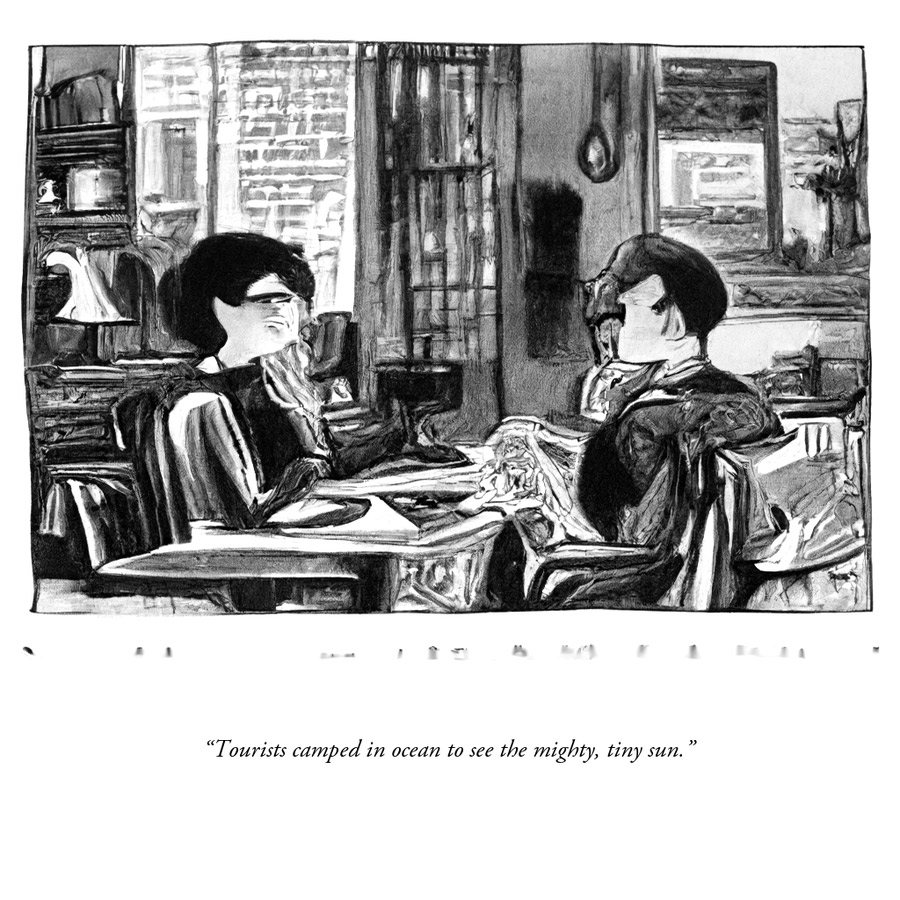
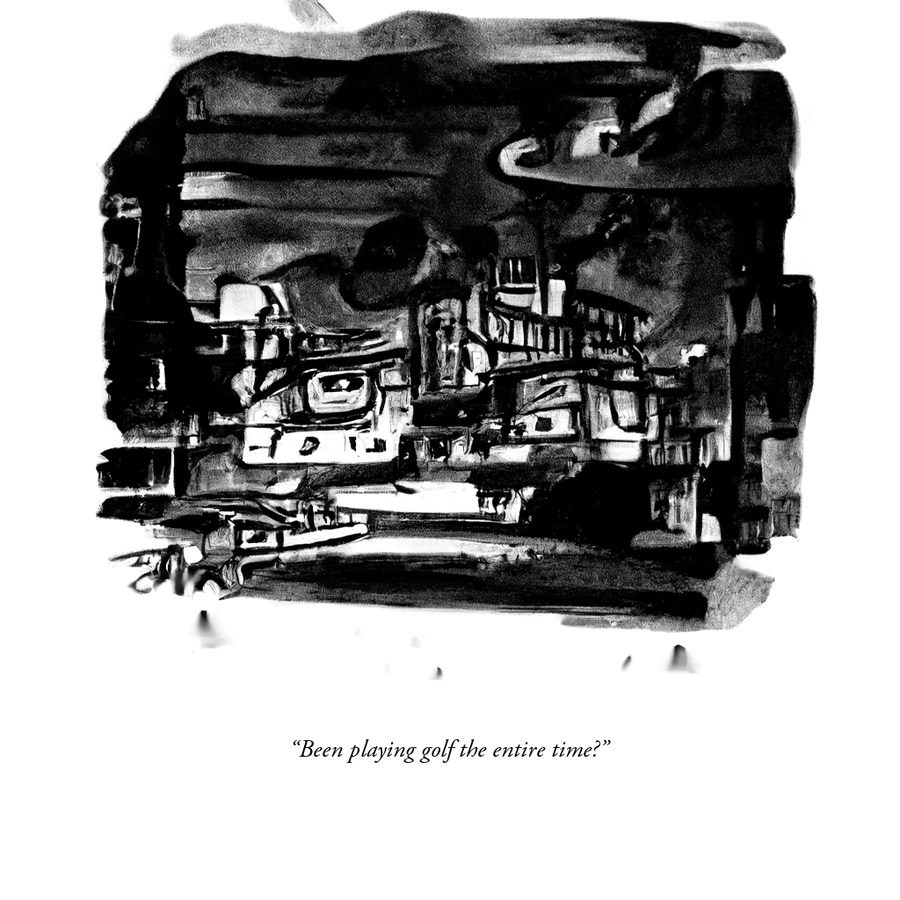
JB: As an artist, you are also producing important critical and theoretical work, not just on top of your artistic production, but completely merged with it. How do you see the meaning of the notion “artist-researcher” (or “researcher-artist”)? And how did your ideas in this regard changed during the time you spent writing a practice-based PhD (which is, I guess, not really the same as a theory-led creative practice)?
IM: I see both practices as entirely coterminous. I think there is less and less meaningful margin for unidisciplinary approaches to art praxis and art theory. Comics, unlike other media, allows a playful engagement with theory as most of the established theoretical tools in comics are either too narrow, revolving for example around narratological concerns, or not so relevant anymore- I might be slow here, but I am wondering about the diminishing returns of structuralist and semiotic analyses that continue to be prevalent in much academic writing. The fact that there is no entrenched, relatively agreed-on genealogy of comics, (one of the perks of old-linen definitional debates) makes that artists can draw their own lineage, their own affinities, their own legacies. For instance, Ben Katchor would understand comics as originating from early traditions of oral storytelling in itinerant troubadours and this specific lineage makes his work very idiosyncratic and original.
I am increasingly drawn towards theorizing conceptual comics using the jargon from information computer technologies (ICT) and more specifically cybersecurity, based on a recent internship I did and an ongoing degree education I am trying to complete in penetration testing. I have specifically used as a roadmap to my artistic projects the research of cybersecurity experts such as Bruce Schneier, Kevin Mitnick et al. An artistic practice in comics could therefore be described in terms of penetration testing where a project should not accumulate unnecessary operations and aesthetic choices from an artist’s perspective which would increase liability in the making of a work (the equivalent of expired certificates or components with known vulnerabilities) and would need to be designed and implemented in way that can mitigate the impact of different critical inquiries (queries) raised by suspicious readers (SQL injections, hijacking) sometimes in a viral way (Brute Force Attacks and DDOS) pointing to potential arbitrary elements in a concept (vulnerability) that have not been prevented (input sanitization), strategized in advance (honeypots), nor purged from unchecked discursive arguments in contingent research fields (Cross-Domain Referer Leakage). Theory in comics has a constructive world-making ethos and can be experienced as emancipatory rather than disciplinary and this is how an academic research in comics can be so gratifying.
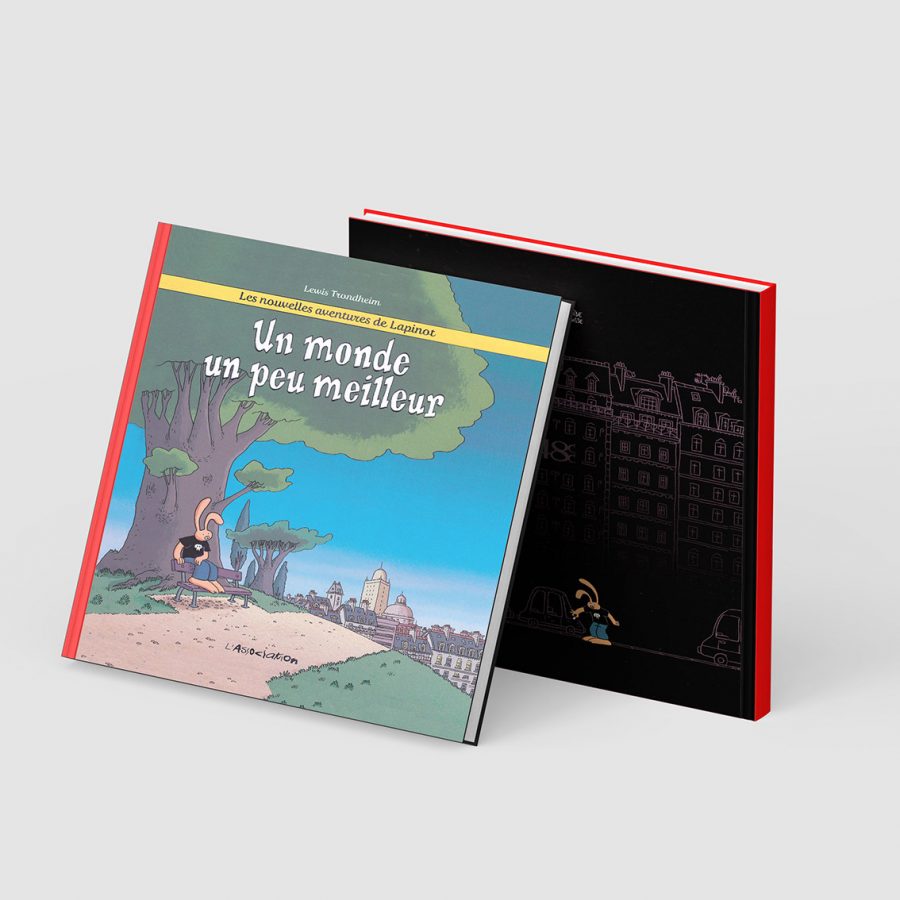
JB: Collaboration and networking, which of course do not localization and embodiment, are key in your work. But how are the two perspectives –the outward bound aspect of networking, the inbound aspect of subjective contextualization, be it in the case of the maker or in that of the audience– actually related? And can you give some examples of artists, projects, works, institutions, ideas, etc. that you use a model for your own projects?
IM: I am interested in different and rarely overlapping fields of expertise not always with a clear artistic direction. I gave the example of network security and how it can inform an understanding of conceptual comics. I have been interested in how poetry has been dealing with problems that are different but in some regards similar to the ones I face with comics and I think here particularly of the work of Craig Dworkin, Kenneth Goldsmith, Franck Leibovici, Susan Howe, Kathy Acker, Simon Morris, Marcus Boon, Vanessa Place and Rob Fitterman among others. I have been particularly interested in writings around contemporary art and synthetic cognition with works from Benjamin Bratton, Blaise Agüera y Arcas, K Allado McDowell, Patricia Reed, Bogna Konior, Bassam El Baroni, Marina Vishmidt, Suhail Malik but also many others.
JB: Your achievements in the domain of experimental art (comics and beyond) are impressive, and for many people your career has the smell of (great) success. But what are the problems you are struggling with in your projects, and which are for instance the ideas or projects that you had to abandon or that failed, and how did this impact or change other projects? I guess some of these problems are easy to grasp (copyright or funding issues for instance), others may be quite “abstract” for a lay audience (I am thinking of your use of “big data”, but there are certainly many other questions).
IM: I am tempted to give a short answer: Fundraising and copyright is not an issue. The biggest discontent I face is situated in comics communities themselves, where I feel that I need to deal constantly with a suspicion against anything that doesn’t pay tributes to the medium’s respected “fathers”, (yes, it’s always gendered). I remember here getting quasi humiliated by an older comics artist for my Katz book, or the critique I got from an older very respected artist that my projects are designed to be lab-friendly in order to raise funds, as if this was something bad in itself. This suspicion can easily be expressed against anything that expands craftsmanship in territories where a male performativity of melancholia doesn’t produce any effect. I am tired of a latent conservatism of the small independent art comics scene with their glorification of manual labor and monastic printmaking, where comics artists generally double as conventional landscape painters driven by a nostalgia for older times (really who other than a Belgian male artist can be nostalgic of the 50’s), the adoption of a general perspective of the bande dessinee as a quasi-luddite apprehension of human expression or as a produit de terroir, its bourgeois sexuality and the ambiguous performance of marginality due to the under-representation of comics art in the general spectrum of contemporary art while in the same time embracing the universal, productivity-driven, hyper-caffeinated 24-hour comics sessions that have become a global standard of mediatised community engagement- a spectacularized form of subaltern artistic labor.
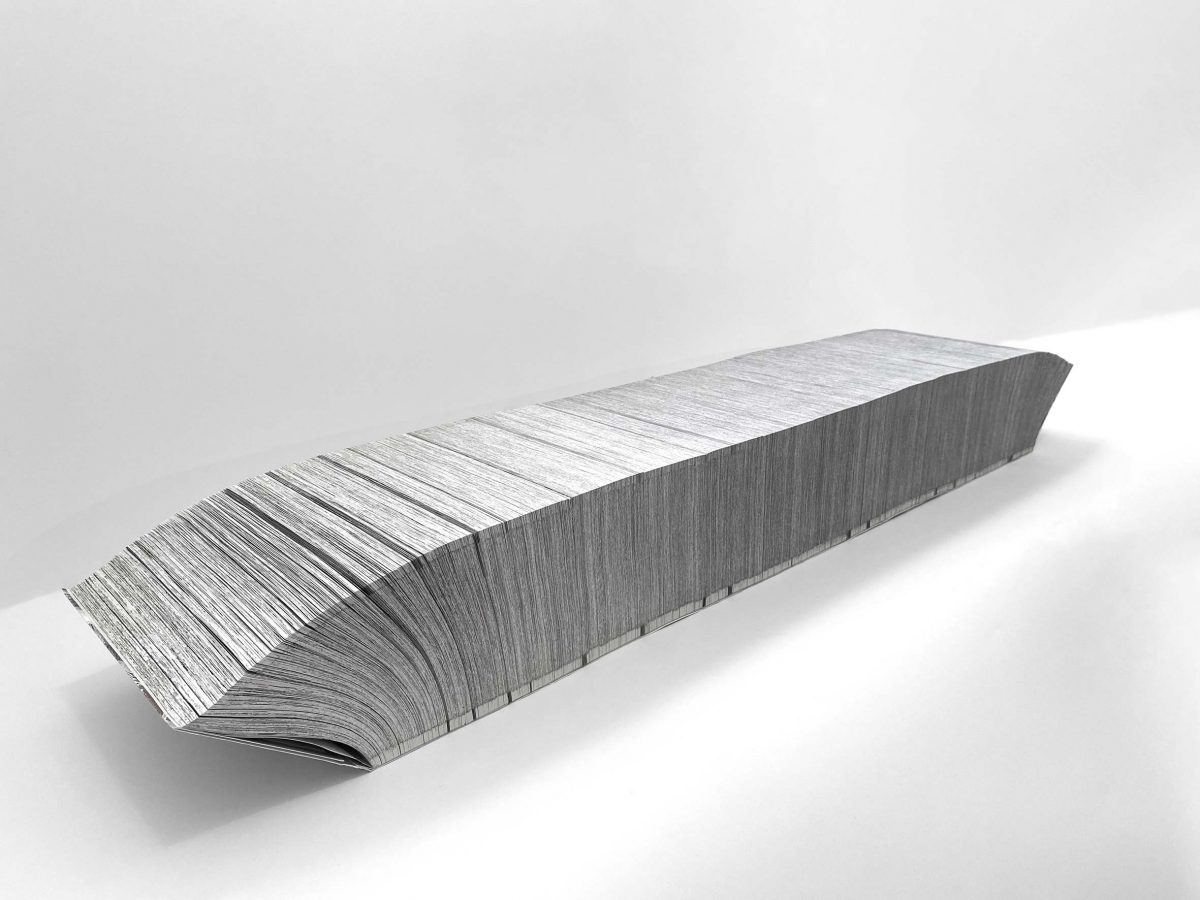
JB: Like many contemporary artists, you work “globally”, with “local” and “glocal” support. How do you see the relationship between the local and the global, and would you be capable of working “anywhere”? Do you also have an idea of the audience that you reach? Is it equally global, and why is that important for you?
IM: I guess that it will not be sincere to say that I would be able to work or to have started anywhere. Belgium seems to be this very rare place in earth where the importance of comics heritage, the profusion of contemporary experimental comics publishing (and I would add here a healthy dose of turf competition, and a not so cool nepotism operating across educational departments, funding policies and institutional cultural gatekeeping), the intervention of public policies in understanding comics as an important part of Belgium’s heritage, the rather horizontal structure of funding bodies in decision making processes, and a bit of old national protectionism for in-house-artists offers exactly the right conditions for a vibrant comics scene. The audience for me is a very disembodied concept and I follow Kenneth when he puts the accent on thinkership, naturally more distributed than the quantifiable, oppressive mass of readership. This is where Belgian comics appear to stall once they have gathered a certain gravity- they can entirely rely on the small french speaking ecosystem.
JB: Your experimental approach is not an example of art for art’s sake. Your work is socially, ideologically, politically very committed. How do you see this “critical” dimension of your work, and at what levels do you think you can make a difference?
IM: I see comics as a modeling technology for tackling larger ideas in politics, society and ethics. Both as an artist and a researcher I understand comics as a vast terrain of industrial experimentation for the production of works that, in other sectors of contemporary research and practice, would be too expensive, too risky, very slow or simply highly dependent on institutional support, to initiate. The medium’s low-risk deployment, its scarce financial resources, but also its community support mechanisms, rather than constituting here the medium’s limitations as it has often been theorized, are deployed as a necessary condition for the formation of a new interdisciplinary comics praxeology. Comics can no longer be assumed as known objects; they require instead the emergence of a novel epistemological space that should take seriously a non-hegemonic disciplinary concurrence. Take for instance, Shapereader, a non-alphabetic system of tactile communication, initially developed for communities of visually impaired for the production of comics. Shapereader is built on an expanding repertoire of tactile ideograms (tactigrams) providing haptic equivalents for all the semantic features, the conceptual functions and the textual attributes of a narrative. Shapereader’s participatory ethos is an exercise in disciplinary cohabitation, as it engages groups of people that are conventionally not represented in comics communities. The constituency of attendants in Shapereader’s participatory workshops offers therefore a compelling opportunity to work across disciplinary domains and social worlds.
The project has expanded beyond the domain of comics. Shapereader has been used as a system of general notation, with applications in music and graphic scores, poetry, cartography and even recipe notes. Shapereader, initially a comic project, was a Petri dish, a modeling tool, where I could tackle larger ideas related to embodied cognition, radical forms of translation and transcreation, universal systems of signification and disability as an important conduit for conducting creative participatory projects.
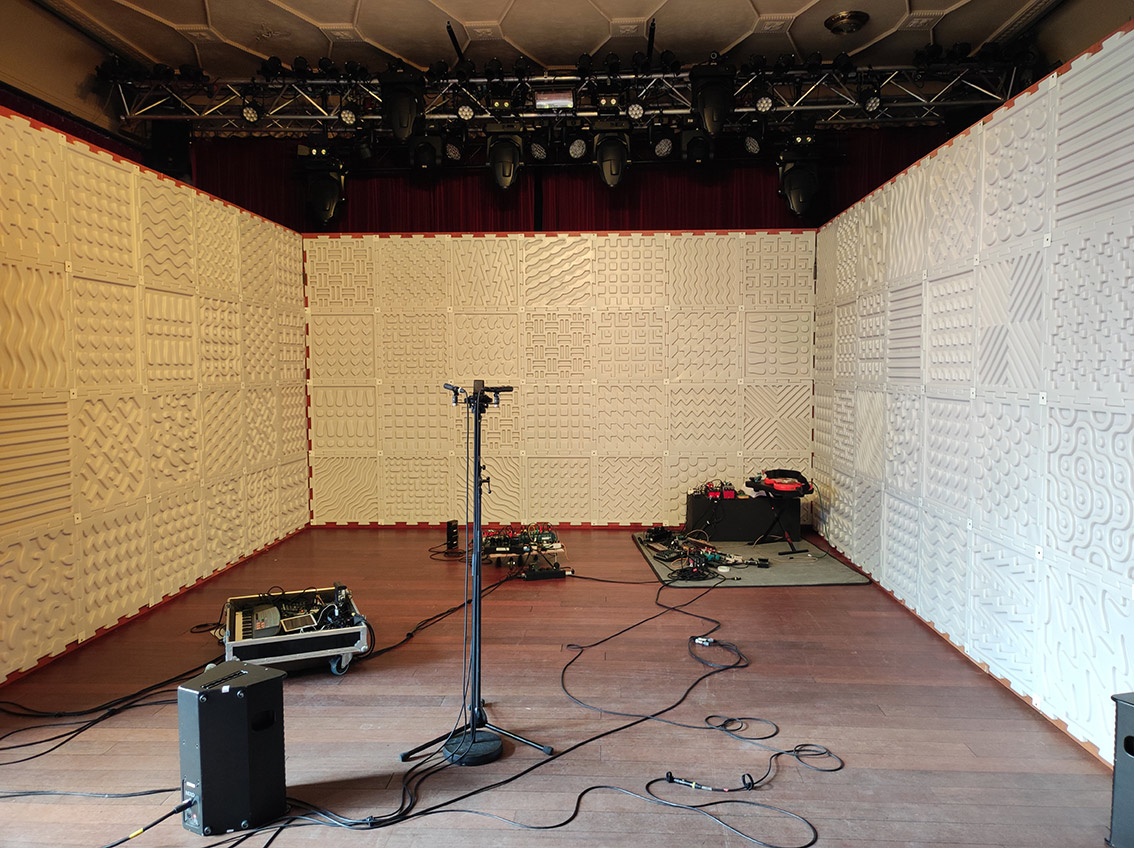
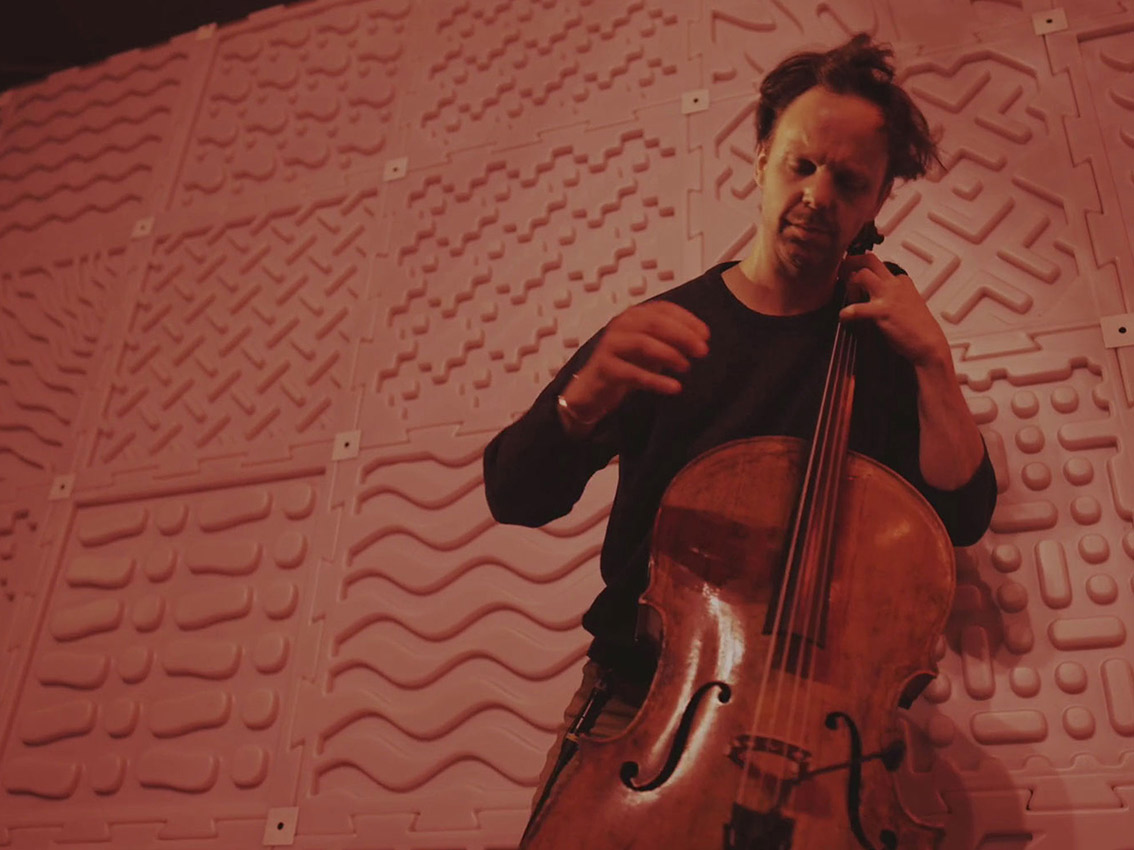
Leuven-Athens, 2022